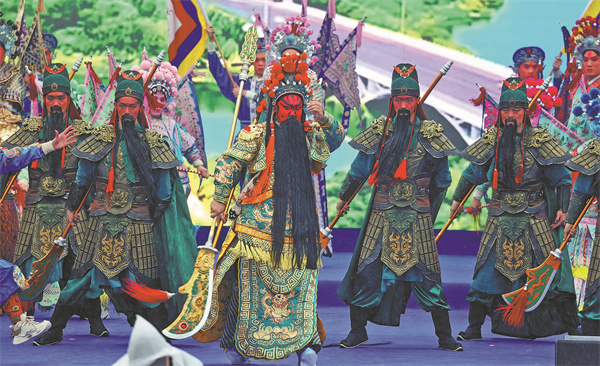

As to how an ancient hero stays relevant, Wang Shi proposes an inheritance "keeping pace with the times" — recasting "loyalty" as dedication to one's work, "righteousness" as integrity in daily life. He proposes creating a Guangong cultural IP to draw the young.
In Haizhou, these ideas are already in motion. The temple now doubles as a location for the popular video game Black Myth: Wukong and a lab for digital storytelling.
Near the Haizhou Guandi Temple, a digital hall offers a more visceral encounter. Here, in the shadow of ancient temple roofs, past and future meet: the scent of incense blending with the glow of headsets, a culture learning not only how to be remembered but also how to keep living.
During the National Day and Mid-Autumn Festival holidays, visitors flock to XR (extended reality) films like Guan Yu Subdues Demons, in which viewers virtually soar over Haizhou on wooden kites, fly through Zhongtiao mountains (one of the birthplaces of Taoism), and battle demons alongside the general.
"Fighting alongside Guangong felt completely real," says Liu Zihan, a tourist from Xi'an, Shaanxi province.
Guo Lifeng, whose company produced the experience, sees the work as just the start. "We're taking Guangong beyond Shanxi to Hong Kong, Macao, Taiwan, and also to Southeast Asia. We're using technology and youth language to help this tradition travel."
Zhang Zhuozhou of the Shanxi Yuncheng Guangong Culture Research Association is building a "Guangong culture large-scale model", a digital ecosystem pooling data from over 30,000 temples, millions of texts, and thousands of architectural motifs to create an open digital archive for research, education and cultural preservation. Now, Zhang and the team have already collected data on more than 1,000 temples.
"By harnessing global contributions, we hope to build an open, collaborative and shared brand. Our goal is to transform Guangong culture from a regional symbol into a global one," Zhang says.